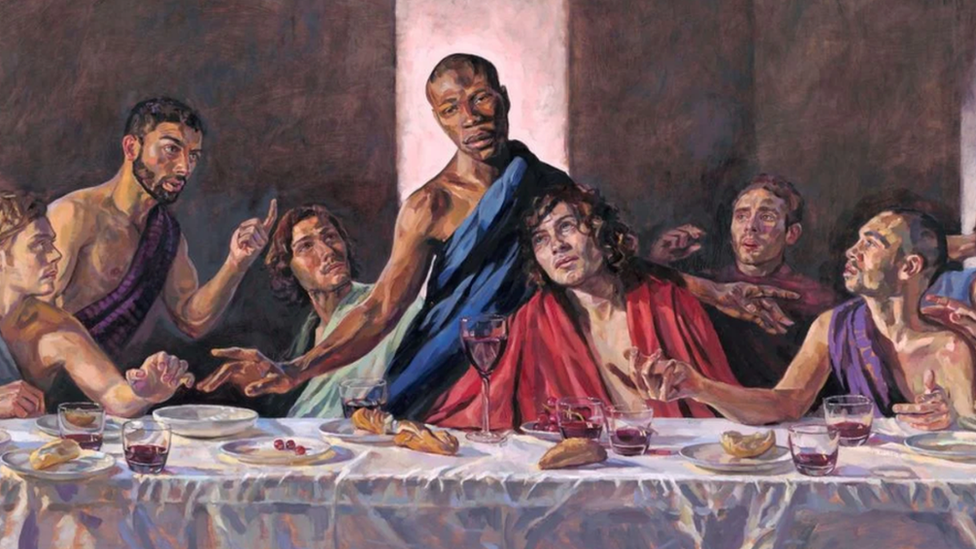Coronavirus: 'There's no way we can think about profit in 2020'
- Published
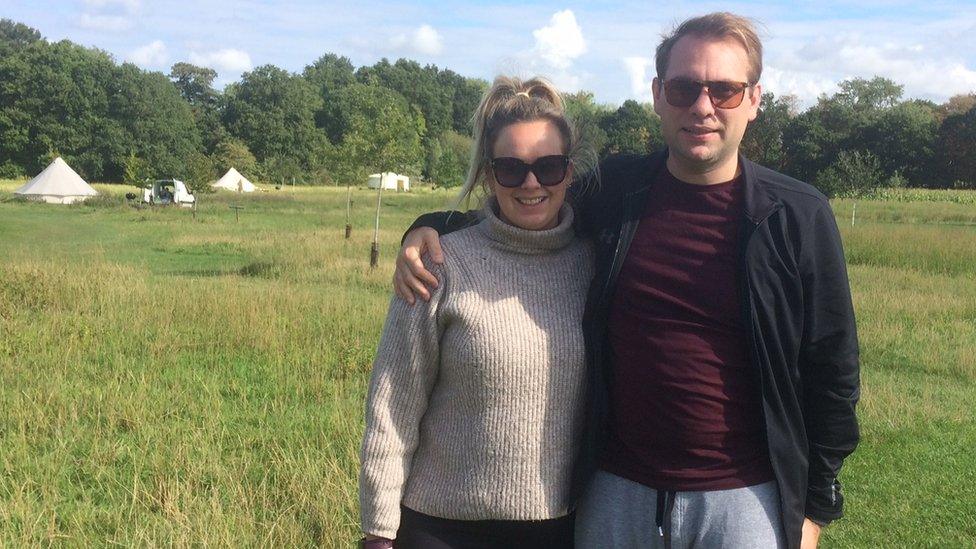
Georgie Herdman and her fiancé Harry Noble were "looking for something different to do" after their Greek honeymoon had to be postponed
Hertfordshire might not seem the most obvious getaway destination but each year it welcomes millions of visitors. With more people holidaying closer to home, did its tourist industry manage to make up for lost time after the coronavirus lockdown?
Georgie Herdman and Harry Noble were supposed to be honeymooning in Greece this summer.
But those plans, along with their June wedding, had to be scrapped, leaving them looking for "something different".
Initially, they struggled to find anywhere available and had to join a 450-strong waiting list for Home Farm Glamping, in Elstree.
It is set in 150 acres of farmland, able to accommodate 12 households and is about an hour's drive from their home in west London.
Thanks to a late cancellation, they managed to get a night away.
"Harry has done basic camping and I've never stayed in a tent in my life so we were on two ends of the scale," said Ms Herdman.
"Normally we'd go abroad and in the UK we go to country hotels but we'd definitely come back again. It's completely different to anything we've done before."
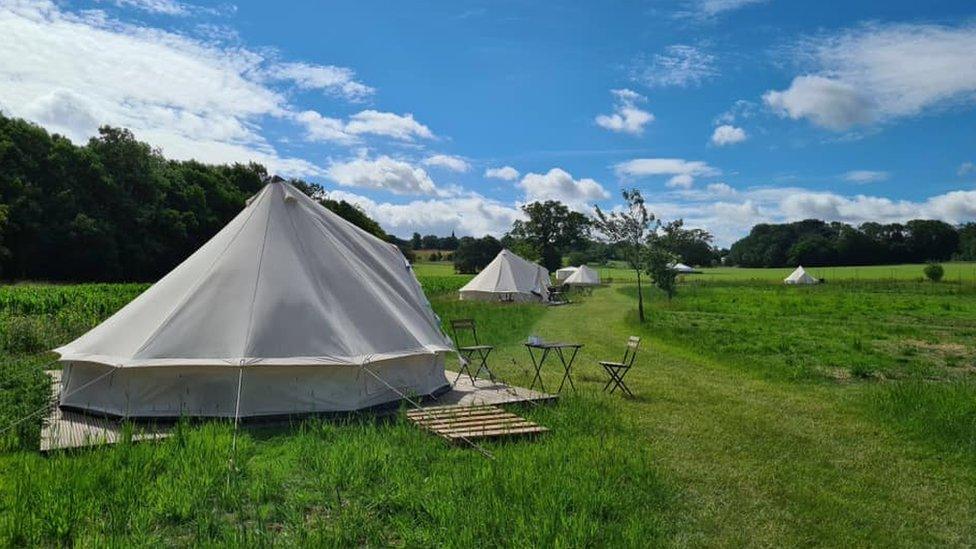
Home Farm Glamping had 450 people on a waiting list this summer
Each year, 28 million people visit Hertfordshire, bringing in £2.2bn to the local economy and supporting 40,000 jobs, according to the Visit Herts tourism website.
Like other destinations, Home Farm Glamping saw a surge in visitors after lockdown restrictions were eased.
Previous years have seen quiet mid-weeks and full weekends, with an occupancy rate of about 40% overall. This year, they have been full throughout July and August.
Founder Jess Allen-Black said it was looking like being a good summer overall.
"We had to go from a complete standing start, from nothing on 3 July to totally full-on 4 July," Ms Allen-Black said.
"But it's been amazing, it makes it all worthwhile seeing people's appreciation when they are there and seeing the children running around."
Stately home Knebworth House, near Stevenage, could have sold "three times" as many tickets but had to turn away many visitors due to restrictions on numbers.

Knebworth House has had "good success" with drive-in cinema since being able to reopen
Estate managing director Martha Lytton-Cobbold, who lives with her husband Henry in his ancestral home, said lockdown was "utterly devastating".
"It was quite eerie and really soul destroying - seeing costs rising and revenue declining," she said.
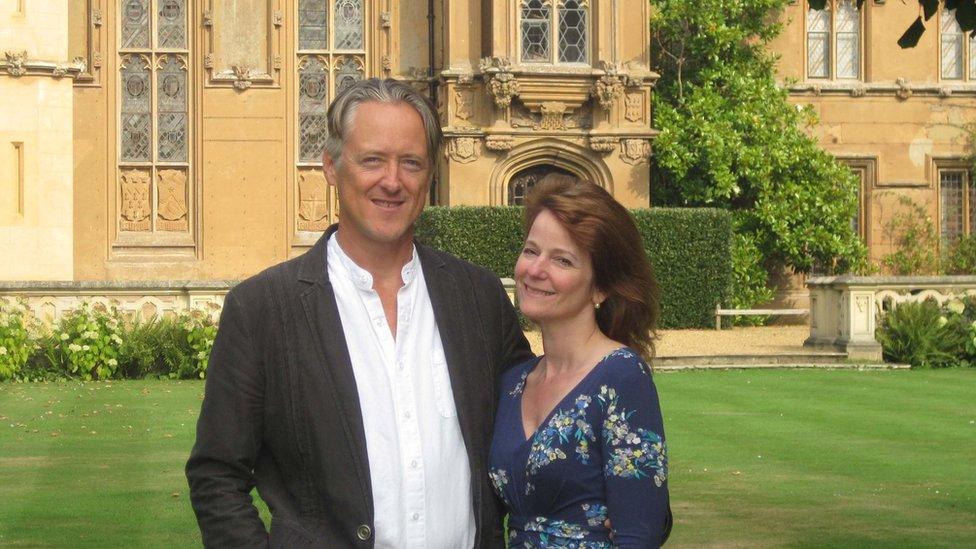
Henry and Martha Lytton-Cobbold, live at his ancestral home, Knebworth House, where they are at the 19th generation since it was built in 1490
Since reopening with capped numbers and restrictions, they have had "good success" with drive-in cinema and open air garden theatre.
But Mrs Lytton-Cobbold added: "There's no way we can think about profit this year.
"This is all about survival and we're looking at every opportunity to make this work and open in a more full way as soon as we're able to."
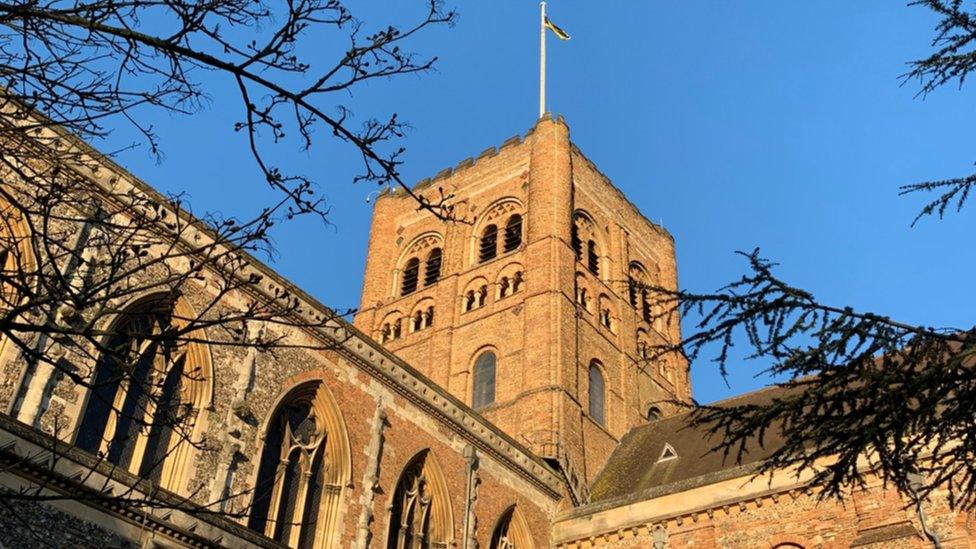
St Albans cathedral said visitor numbers were "looking positive"
Reopening on the first date they were able to in July, St Albans Cathedral said it had more than 700 visitors on that day alone.
By the end of August, that number had reached 36,000 - compared to about 40,000 over the same period last year.
It said lockdown had been a "challenging time" but also a "time for great transition".
Having streamed services live online, it now has about 1,650 subscribers on its YouTube channel, up from about 30 in March.
"We are absolutely making the most of every opportunity to safely get our wonderful visitors back to the cathedral," a spokeswoman said.
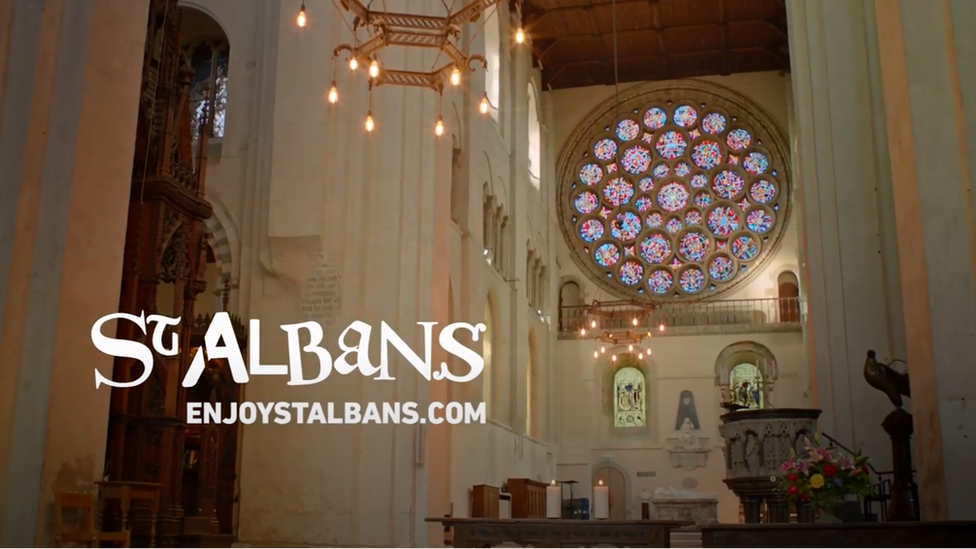
The new St Albans advert encourages visitors to the city's open spaces and 2,000-year-old heritage
Visitor numbers in St Albans were on an upward trend before Covid-19 hit, increasing by 36% between 2013 and 2018 but the St Albans Bid (Business Improvement District) said lockdown was "like a tap turning off".
It has produced its first-ever TV advert to illustrate what the historic city can offer.
It is targeted at young families and young professionals within a 45-minute radius of the city and can be seen across multiple Sky TV channels.
Bid co-chair Sarah Gillow, who owns a jewellery shop, said: "Even though we represent businesses, we just wanted to encourage people out of the house to enjoy the city's open spaces and hospitality."
"I think we're all really trying, we are making the most of every minute, but I highly, highly doubt we're making up the figures," she said.
"It won't make up for four months of nothing."

St Albans grew up around Verulamium, the third largest city in Roman Britain, with the cathedral built on the site of the execution of Alban, Britain's first saint
Visit Herts chief executive Deidre Wells said it had been "up and down" time for much of the county's tourism industry.
"In general, we've found we're now about 50-70% on where we would normally be in terms of visitors at attractions," she said.
Ms Wells said they are calling 2020 the "year of three winters".
"We're going from winter to winter to winter," she said.
Nationally tourism is usually 80% domestic and as for the rest, levels of overseas visitors are not likely to return to normal levels until at least 2023, she added.
"Our message is that we're keen to welcome visitors that want to enjoy our beautiful county safely and responsibly, and we've been quite heartened by the response," said Ms Wells.
"For the foreseeable future we are concentrating on residents and the London audience but bums on seats are bums on seats - it doesn't matter where they come from, we just want people to spend money."

Find BBC News: East of England on Facebook, external, Instagram, external and Twitter, external. If you have a story suggestion email eastofenglandnews@bbc.co.uk, external
- Published4 July 2020
